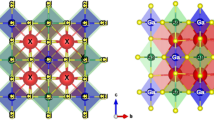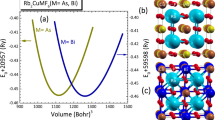Abstract
This paper makes an improvement on the determination of the temperature, bowing parameter, and antimony (Sb) composition effects on the fundamental band gap energy of InAs1−xSbx ternary alloys for infrared (IR) photodetection. The present study was carried out in a broader temperature range from cryogenic to room temperature for the entire alloy range, and a reasonable analysis has also been carried out. Meanwhile, a proposed expression for the band gap bowing parameter temperature dependence has been established. The optical cut-off wavelength can be further tuned over a significant range up to 14 μm or more by altering the stoichiometry of InAs1−xSbx alloys. The three Varshni and Bose–Einstein thermodynamic parameters were found to exhibit a parabolic trend with Sb composition. Consequently, the quadratic equations relating these parameters to Sb composition were derived. The relatively weak band gap temperature coefficient reported here is hoped to offer an improvement on infrared photodetector (IR-PD) stability. Also, the average phonon energy and the corresponding electron–phonon coupling interaction strength were investigated versus Sb composition. The available experimental results were used, where possible, to confirm our theoretical estimates, and the agreement is satisfactory. We expect that the present work will be helpful in designing and improving the photodetection properties of IR optoelectronics devices. Additionally, it provides a firm basis for our forthcoming determination of the electronic band structure properties of InAs1−xSbx based superlattices.
Graphical Abstract









Similar content being viewed by others
References
K. Michalczewski, D. Benyahia, J. Jureńczyk, D. Stępień, A. Kębłowski, J. Boguski, J. Rutkowski, and J. Piotrowski, High operating temperature LWIR and VLWIR InAs1−xSbx optically immersed photodetectors grown on GaAs substrates. Infrared Phys. Technol. 97, 116 (2019).
M.R. Biefeld, The metal-organic chemical vapor deposition and properties of III–V antimony-based semiconductor materials. Mater. Sci. Eng. R Rep. 36, 105 (2002).
W. Dobbelaere, J. De Boeck, C. Bruynserede, R. Mertens, and G. Borghs, Electron, InAsSb light emitting diodes and their applications to infrared gas sensors. Electron. Lett. 10, 890 (1993).
S. Adachi, Properties of semiconductor alloys: group-IV, III-V and II-VI semiconductors, 1st ed., (Wiley: New Jersey, 2009).
S.V. Ivanov, A.N. Semenov, V.A. Solovev, O.G. Lyublinskaya, Y.V. Terentev, B.. Ya.. Meltser, L.G. Prokopova, A.A. Sitnikova, A.A. Usikova, A.A. Toropov, and P.S. Kopev, Molecular beam epitaxy of type II InSb/InAs nanostructures with InSb sub-monolayers. J. Cryst. Growth. 278, 72 (2005).
H. Xie, H. Lin, Z. Zhou, Z. Wen, Y. Sun, J. Hao, S. Hu, and N. Dai, Room-temperature InAsSb pBin detectors for mid-infrared application. Infrared Phys. Technol. 128, 104475 (2023).
H.J. Lee, S.Y. Ko, Y.H. Kim, and J. Nah, Surface leakage current reduction of InAsSb nBn MWIR HOT detector via hydrogen peroxide treatment. Infrared Phys. Technol. 112, 103597 (2021).
G. Deng, W. Yang, X. Gong, and Y. Zhang, High-performance uncooled InAsSb-based pCBn mid-infrared photodetectors. Infrared Phys. Technol. 105, 103260 (2020).
D. Benyahia, K. Michalczewski, A. Kębłowski, P. Martyniuk, J. Piotrowski, and A. Rogalski, Investigation on the InAs1−xSbx epilayers growth on GaAs (001) substrate by molecular beam epitaxy. J. Semicond. 39, 033003 (2018).
D. Wang, D. Donetsky, G. Kipshidze, Y. Lin, L. Shterengas, G. Belenky, W. Sarney, and S. Svensson, Metamorphic InAsSb-based barrier photodetectors for the long wave infrared region. Appl. Phys. Lett. 103, 051120 (2013).
G. Belenky, G. Kipshidze, D. Donetsky, S.P. Svensson, W.L. Sarney, H. Hier, L. Shterengas, D. Wang, and Y. Lin, Effects of carrier concentration and phonon energy on carrier lifetime in type-2 SLS and properties of InAs1−xSbx alloys. Infrared Technol. Appl. XXXVII, 318 (2011).
G. Belenky, D. Donetsky, G. Kipshidze, D. Wang, L. Shterengas, W.L. Sarney, and S.P. Svensson, Properties of unrelaxed InAs1−xSbx alloys grown on compositionally graded buffers. Appl. Phys. Lett. 99, 141116 (2011).
V.K. Dixit, B. Bansal, V. Venkataraman, H.L. Bhat, and G.N. Subbanna, Structural, optical, and electrical properties of bulk single crystals of InAsxSb1−x grown by rotatory Bridgman method. Appl. Phys. Lett. 81, 1630 (2002).
J.C. Woolley, and J. Warner, Optical energy-gap variation in InAs–InSb alloys. Can. J. Phys. 42, 1879 (1964).
N.J. Ramer, and A.M. Rappe, Virtual-crystal approximation that works: locating a compositional phase boundary in Pb(Zr1−xTix)O3. Phys. Rev. B. 62, R743 (2000).
J.E. Bernard, and A. Zunger, Electronic structure of ZnS, ZnSe, ZnTe, and their pseudobinary alloys. Phys. Rev. B. 36, 3199 (1987).
S. Tomasuloa, C.A. Affouda, N.A. Mahadik, M.E. Twigg, M.K. Yakes, and E.H. Aifer, Sb-incorporation in MBE-grown metamorphic InAsSb for long-wavelength infrared applications. J. Vac. Sci. Technol. 36, 02D108 (2018).
Y. Lin, D. Donetsky, D. Wang, D. Westerfeld, G. Kipshidze, L. Shterengas, W.L. Sarney, S.P. Svensson, and G. Belenky, Development of bulk InAsSb alloys and barrier heterostructures for long-wave infrared detectors. J. Electron. Mater. 44, 3360 (2015).
P.T. Webster, N.A. Riordan, S. Liu, E.H. Steenbergen, R.A. Synowicki, Y.-H. Zhang, and S.R. Johnson, Measurement of InAsSb bandgap energy and InAs/InAsSb band edge positions using spectroscopic ellipsometry and photoluminescence spectroscopy. J. Appl. Phys. 118, 245706 (2015).
P.T. Webster, N.A. Riordan, S. Liu, E.H. Steenbergen, R.A. Synowicki, Y.-H. Zhang, and S.R. Johnson, Absorption properties of type-II InAs/InAsSb superlattices measured by spectroscopic ellipsometry. Appl. Phys. Lett. 06, 061907 (2015).
S.P. Svensson, W.L. Sarney, H. Hier, Y. Lin, D. Wang, D. Donetsky, L. Shterengas, G. Kipshidze, and G. Belenky, Band gap of InAs1−xSbx with native lattice constant. Phys. Rev. B. 86, 245205 (2012).
I. Vurgaftman, J. Meyer, and L.R. Ram-Mohan, Band parameters for III–V compound semiconductors and their alloys. J. Appl. Phys. 89, 5815 (2001).
Y.P. Varshni, Temperature dependence of the energy gap in semiconductors. Physica. 34, 149 (1967).
R. Pässler, Semi-empirical descriptions of temperature dependences of band gaps in semiconductors. Phys. Status Solidi C. 236, 710 (2003).
Y. Lin, D. Wang, D. Donetsky, L. Shterengas, G. Kipshidze, G. Belenky, S.P. Svensson, W.L. Sarney, and H.S. Hier, Conduction-and valence-band energies in bulk InAs1−xSbx and type II InAs1−xSbx/InAs strained-layer superlattices. J. Electron. Mater. 42, 918 (2013).
K. Murawski, E. Gomółka, M. Kopytko, K. Grodecki, K. Michalczewski, Ł Kubiszyn, W. Gawron, P. Martyniuk, A. Rogalski, and J. Piotrowski, Band gap energy determination of InAsSb epilayers grown by molecular beam epitaxy on GaAs substrates. Prog. Natl. Sci. Mater. Int. 29, 472 (2019).
S. Suchalkin, J. Ludwig, G. Belenky, B. Laikhtman, G. Kipshidze, Y. Lin, and L. Shterengas, Electronic properties of unstrained unrelaxed narrow gap InAsxSb1−x alloys. J. Phys. D Appl. Phys. 49, 105101 (2016).
J.D. Kim, D. Wu, J. Wojkowski, J. Piotrowski, J. Xu, and M. Razeghi, Long-wavelength InAsSb photoconductors operated at near room temperatures (200–300 K). Appl. Phys. Lett. 68, 99 (1996).
I.A. Vainshtein, A.F. Zatsepin, and V.S. Kortov, Applicability of the empirical Varshni relation for the temperature dependence of the width of the band gap. Phys. Solid State 41, 905 (1999).
B. Bhavtosh, V.K. Dixit, V. Venkataraman, and H.L. Bhat, Temperature dependence of the energy gap and free carrier absorption in bulk InAs0.05Sb0.95 single crystals. Appl. Phys. Lett. 82, 4720 (2003).
Z.M. Fang, K.Y. Ma, D.H. Jaw, R.M. Cohen, and G.B. Stringfellow, Photoluminescence of InSb, InAs, and InAsSb grown by organometallic vapor phase epitaxy. J. Appl. Phys. 67, 7034 (1990).
H.H. Wieder, and A.R. Clawson, Photoelectronic properties of InAs0.07Sb0.93 films. Thin Solid Films. 15, 217 (1973).
Funding
The author declares that this research received no funding.
Author information
Authors and Affiliations
Contributions
The corresponding author contributed to: Conceptualization, Investigation, Data collection and analysis, Methodology, Software, writing–original draft of the manuscript, review & editing. The corresponding author read and approved the final manuscript.
Corresponding author
Ethics declarations
Conflict of interest
The author declares that he has no conflict of interest.
Additional information
Publisher's Note
Springer Nature remains neutral with regard to jurisdictional claims in published maps and institutional affiliations.
Rights and permissions
Springer Nature or its licensor (e.g. a society or other partner) holds exclusive rights to this article under a publishing agreement with the author(s) or other rightsholder(s); author self-archiving of the accepted manuscript version of this article is solely governed by the terms of such publishing agreement and applicable law.
About this article
Cite this article
Boutramine, A. Temperature-and Composition-Dependent Band Gap Energy and Electron–Phonon Coupling in InAs1−xSbx Semiconductors Alloys for Infrared Photodetection. J. Electron. Mater. 52, 6031–6041 (2023). https://doi.org/10.1007/s11664-023-10546-z
Received:
Accepted:
Published:
Issue Date:
DOI: https://doi.org/10.1007/s11664-023-10546-z




